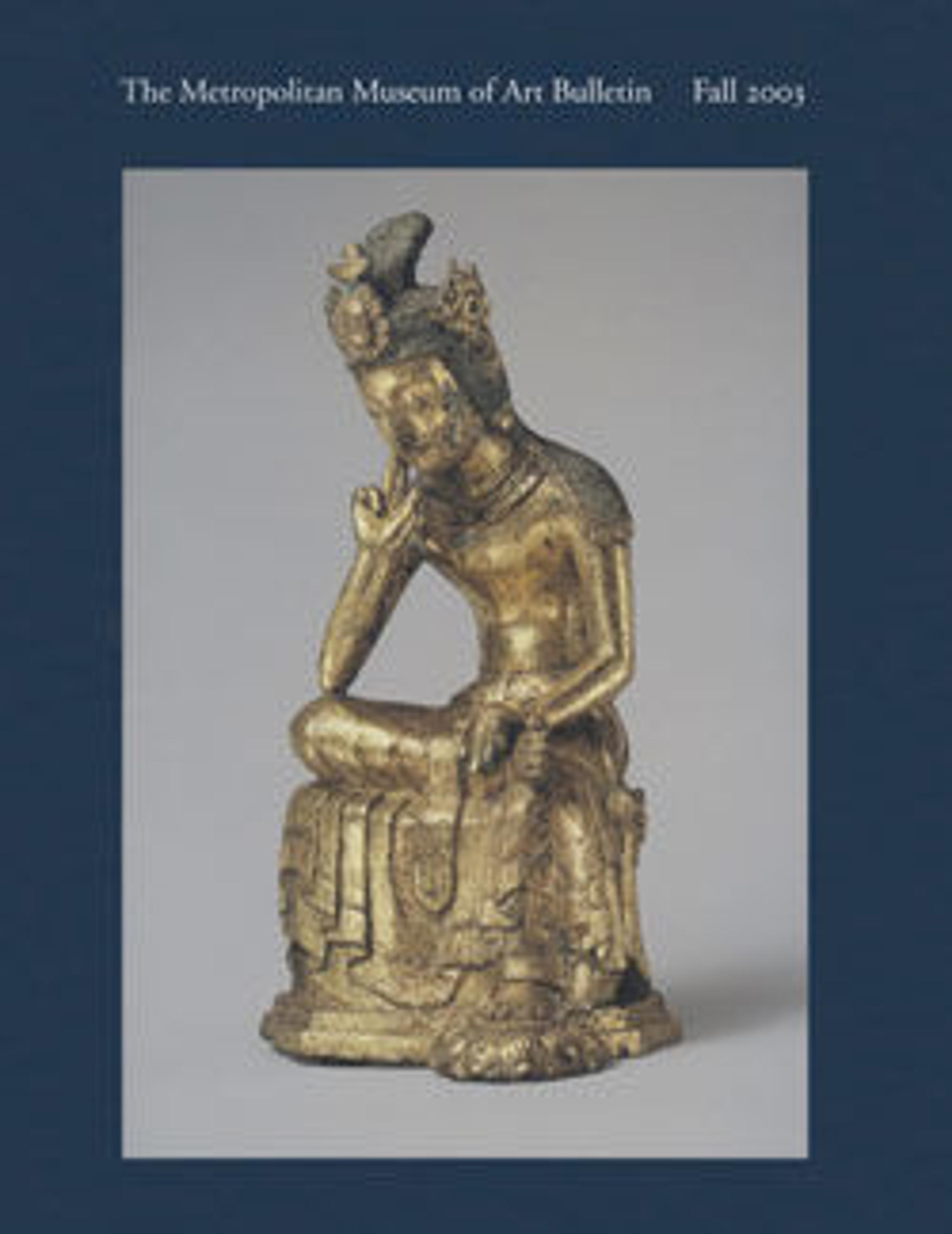Evening dress
This ball gown from a collection of dresses associated with the duke of Cumberland's wife, Thyra, princess of Denmark, and his daughters merges the aesthetics of the French haute couture with the technical mastery of a renowned dressmaking establishment of early-twentieth-century Vienna. G. and E. Spitzer, along with the houses of Christoff von Drecoll and Griinbaum, furnished the Viennese upper classes with gowns reflecting the most recent Parisian trends.
This example, with its raised waistline, vestigial drapery evoking an earlier monobosom bodice, and columnar silhouette with a faint S-curve, conforms to the styles of I9I0 at such venerable houses as Paquin, Doucet, and Worth. These firms, not as avant-garde as that of Paul Poiret (whose innovations were embraced by the Viennese intelligentsia), reflected the regal conservatism of the Hapsburg court. In this instance scrolling "bizarre" motifs in silk floss and the application of bugle beads lined with pure gold create a particularly sumptuous effect. Because of the uncommon purity of the metal, the beading's brilliance contributes an uncanny freshness to the gown's appearance.
This example, with its raised waistline, vestigial drapery evoking an earlier monobosom bodice, and columnar silhouette with a faint S-curve, conforms to the styles of I9I0 at such venerable houses as Paquin, Doucet, and Worth. These firms, not as avant-garde as that of Paul Poiret (whose innovations were embraced by the Viennese intelligentsia), reflected the regal conservatism of the Hapsburg court. In this instance scrolling "bizarre" motifs in silk floss and the application of bugle beads lined with pure gold create a particularly sumptuous effect. Because of the uncommon purity of the metal, the beading's brilliance contributes an uncanny freshness to the gown's appearance.
Artwork Details
- Title:Evening dress
- Design House:G & E Spitzer (Austrian)
- Date:1910–12
- Culture:Austrian
- Medium:silk, pearl, glass
- Credit Line:Purchase, Irene Lewisohn Bequest, 2003
- Object Number:2003.46
- Curatorial Department: The Costume Institute
More Artwork
Research Resources
The Met provides unparalleled resources for research and welcomes an international community of students and scholars. The Met's Open Access API is where creators and researchers can connect to the The Met collection. Open Access data and public domain images are available for unrestricted commercial and noncommercial use without permission or fee.
To request images under copyright and other restrictions, please use this Image Request form.
Feedback
We continue to research and examine historical and cultural context for objects in The Met collection. If you have comments or questions about this object record, please contact us using the form below. The Museum looks forward to receiving your comments.
